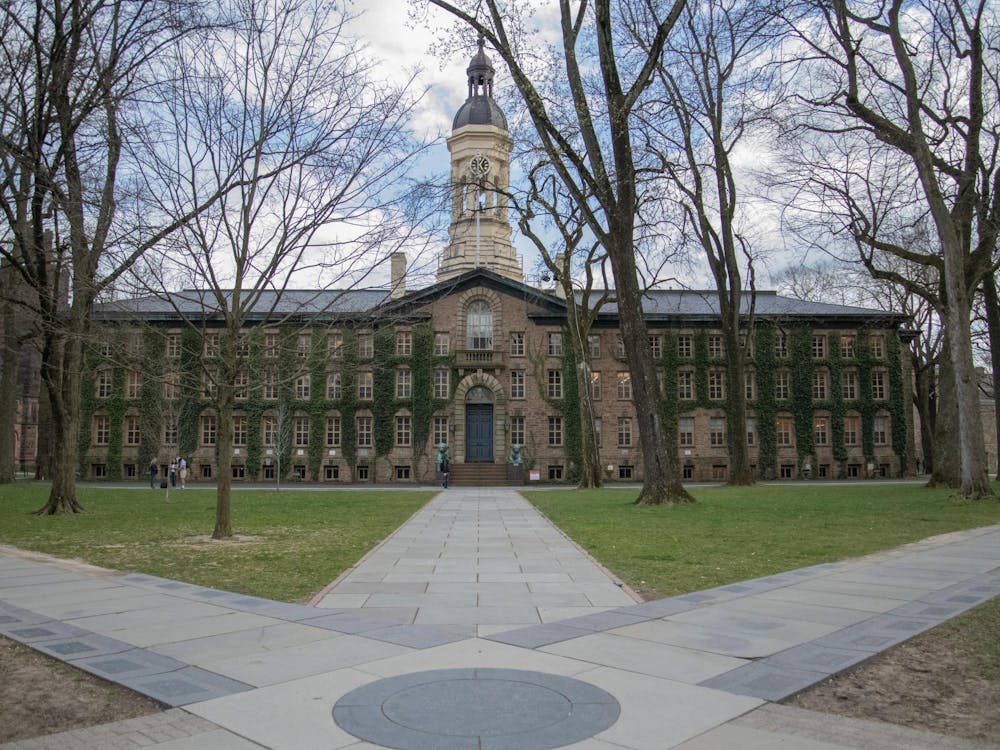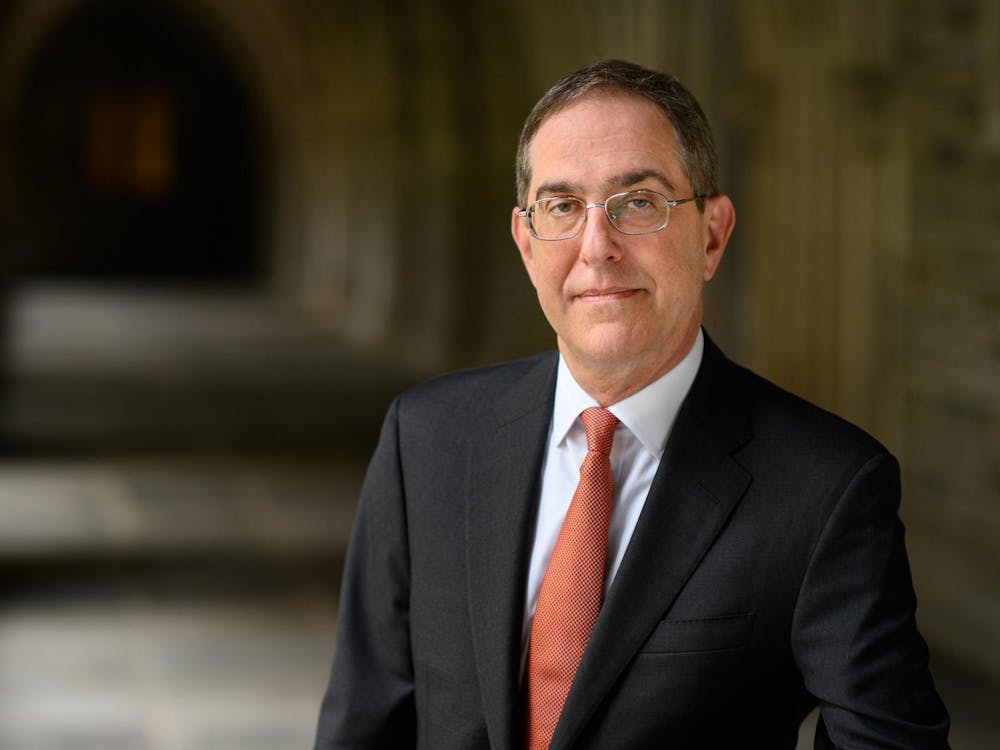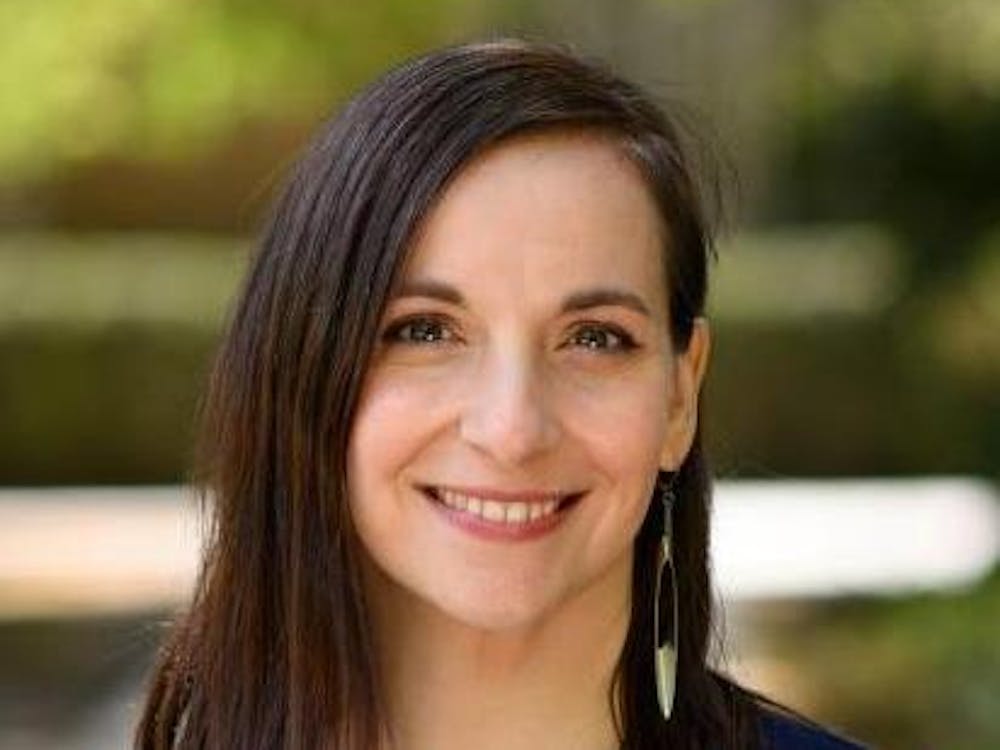Last weekend, a mysterious procession of people weaved its way through north campus. From a distance, they emitted a collective murmur, like a moan of mourning. But if you got close enough, you could catch snippets of individual sentences. In their sudden intelligibility and idiosyncracy, the reader’s emergent voice blending with the voices of others, they sounded more like joy. A cacophony of words, embodied and reverberating and alive.
Each participant in the procession was quietly reading aloud from books in Spanish, Portuguese, or English. The books were written or adored by the acclaimed Argentine writer and Princeton professor Ricardo Piglia, who died earlier this year. The procession was not a funeral march, but a parade of life.
It was part of the appropriately-named “Live Art” sessions that occurred across campus this past weekend, sponsored by the Program in Latin American Studies (PLAS). Mundane locations from Firestone Library to East Pyne courtyard were transformed into profound and public spaces, as a diverse group of artists, mostly from Argentina, enacted a series of interdisciplinary, uncategorizable, embodied art “actions.” Each of these actions required the participation of the public and brought in the voices of the little-known and little-heard in the dominant “dialogues” of the University. They enacted a theater of the every day, calling our attention to how we read, examine, and navigate our world as an unavoidably political and interpersonal space that makes demands of each of us and all of us. I walked away changed.
And I couldn’t help but think about another series of art events that I participated in the weekend before: the Festival of the Arts, the official opening of the new Lewis Center for the Arts complex. The events of the Festival itself were well-produced, the complex buzzing with people, and the building nothing if not impressive and striking.
But in comparison to the Live Arts sessions of PLAS, which set out to re-envision the spaces we already inhabit, this new space felt strangely dead. It felt as if the building didn’t care about the people who inhabited it; it didn’t care about who it welcomed in and who it kept out. Someone said that being in the space made them feel like one of those 2D people in an architect’s computer simulation, and I knew exactly what they meant.
Every designer chair and patterned rug and fancy projector and flat-screen HDTV and grand piano and echoing room and hallway to nowhere, all new, thousands or tens or hundreds of thousands of dollars each, didn’t feel like they were there for me to use to put on a show: they were the show. This is what Princeton’s investment in the arts looks like, they said. This is how we care about you. This is how we compete, how we keep up, how we grow. This is what education looks like. This is in the service of humanity, they said. This is how you spend $330 million.
Sitting on those couches whose price could feed a family for a year, one can wonder about the ethics of consumerist economics. One can look just across the trees to Trenton, which currently has $80,000 for their own attempt at an arts district, and ponder unjust concentrations of wealth. One can sit there and think all day long about what $1 million would’ve meant to, say, 330 random cash-strapped community colleges (which serve nearly half of this nation’s undergraduates, but receive just a small fraction of annual giving to higher education — most of which goes to already-wealthy private universities like Princeton).
But liberal guilt does no good.
Art, at its best, does. Art at its best — as the Live Art sessions reminded me — is about a radically engaged re-seeing of the present (and the past contained therewithin) to imagine a more just, more communitarian, more beautiful future. It makes us more human, not less so. It springs out of necessity, not excess.
My worry is that the new Lewis Arts complex, in all its shiny, spiky modern glory, in all its dizzying newness, will make us forget this. In its masculine concreteness and surety and willingness to interrupt the skyline; in its great gleaming whiteness that swallows up the casual passerby; in its unthinking wastefulness and belief in the inevitable narrative of growth; in its fabulous wealth and cleanliness and confidence — in its unflinching belief in its own righteousness, its own rationality, its own ways of knowing — the new Lewis Center complex threatens to become a synecdoche for the downfalls of the University writ large. It threatens to defang and assimilate the arts into the moderating (and moderated) modes of production the neoliberal university demands.
But it doesn’t have to. It is up to us, as students and staff and community members at large, to challenge the assumptions that are built into the very architecture of our new art building. We must reclaim the radical space of the arts within (despite?) this new space. Ironically (or perhaps not), this will require great artistry. It will require examining our assumptions about what matters in education. It will require us to ask what the arts are for, anyway.
It is up to us to make the arts at Princeton alive, with the sort of radical engagement with each other and the issues of our time and our humanity that PLAS’ Live Arts demonstrated.

We artists of Princeton University must ask ourselves what it is, exactly, that we stand for and make.
Kyle Berlin is a senior studying Spanish and Portuguese from Arroyo Grande, California. He can be reached at kmberlin@princeton.edu.








